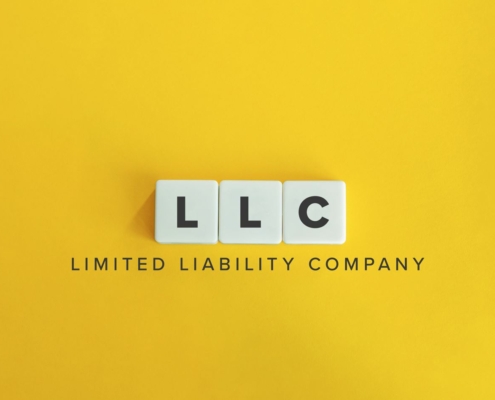Starting a Corporation in California
For the business owner, there are many benefits to creating a corporation in California. Assuming it is properly run, a corporation has the ability to shield its shareholders from debts and liabilities on the business side of matters. A corporation can also raise capital from investors, venture capitalists, and others who can help expand and grow the business. There is also the benefit of added legitimacy. Adding an “Inc.” to a business’ name increases credibility and boosts brand recognition. In terms of stock, corporations also have easily transferable shares.
In order to turn one’s business into a corporation, there are a series of steps that should followed, which we will discuss below.
1. Naming the Corporation
It may be difficult to pick the name that you will be doing business under. After all, picking the right name can have a significant impact on the corporation’s success. And picking the wrong name can result in legal trouble.
First, a business owner should check if the name they want is available b exploring the eligibility database on the California Secretary of State’s website. It is important to check if the name already exists, because in California, two corporations cannot have the same name or a name that is similar.
The business owner should also check to see if the proposed name has already been federally trademarked, in which case it couldn’t be used. It is possible to check this by searching the U.S. Patent and Trademark Office trademark database.
In order to make sure that an existing business isn’t already using the same name, it would be a good idea for the business owner to do a thorough internet search.
Under California law, a corporation’s name needs to include “Incorporated,” “Inc.,” “Corporation,” “Corp.,” or “Limited.” So, for example, a company might be named “South Bay Art Supply, Limited.”
It is also important not to use name that may give the public the wrong impression, such as implying (inaccurately) that the company is associated with the United States government or agency.
Similarly, a corporation’s name cannot include certain words without the proper licenses. This applies to banks, credit unions, and insurers, for example.
Once a business owner has selected a promising name for his or her corporation, he or she should file a trademark application with the USPTO or the state. A trademark will protect the name.
It is also a good idea to avoid hard-to-spell or hard-to-pronounce names.
A business owner should also check online to see if a domain name is available (a “.com”).
In general, it is a good idea to pick a name generic enough that it does not limit business growth. For example, if one’s current business is selling books, then it might make sense to call the business “Book Depot” or something to that effect. However, if one ever wishes to expand their business to selling items other than books, then picking a more generic name not related to books may be a good idea.
2. Finding a California Registered Agent
When a corporation is created in California, there must be a registered agent known as an “agent for service of process.” What is the purpose of this agent? The registered agent can be either a person or a corporation that receives official legal and tax documents on behalf of the corporation.
This agent can be an officer of the corporation, a shareholder, a director, or a registered agent service company. The registered agent needs to have a street address in California and must be available during normal work hours.
It may be a good idea to use an outside registered agent in order to protect one’s privacy. The registered agent’s personal info, such as street address, will be listed in public records, and not the business owner’s info.
3. Filing the Articles of Incorporation
Once a business owner selects a name and a registered agent, it is time for he or she to file the Articles of Incorporation. This is the official document that will turn their business into a corporation. It must be filed with the California Secretary of State to be made official. The document can be filed by the business owner, a corporate lawyer, or using an online incorporation service. When only one class of shares is involved, the form California Form ART-GS is typically used.
Don’t worry – Articles of Incorporation are relatively short and easy to fill out. The sections include:
The Corporate Name
This section requires that a business owner provide the formal name of the corporation.
Address
This section requires that a business owner fill out the street address, city, state, and zip code of the corporation’s address (or the initial address, if the company plans to move locations). It is important that this is a physical address and not a P.O. Box.
Purpose of the Corporation
Usually, the following is the purpose clause: “The purpose of the corporation is to engage in any lawful act or activity for which a corporation may be organized under the General Corporation Law of California other than the banking business, the trust company business or the practice of a profession permitted to be incorporated by the California Corporations Code.”
Authorized Capital
In this section, a business owner must provide the total number of shares that his or her corporation can issue, as well as the different classes of stock. Typically, a new corporation will only have common stock, but it is possible that it might issue both common and preferred stock. The number of shares should be enough to cover the founder’s shares as well as shares that might be issued to future employees and investors. 10,000,000 or more shares is a good number to think about authorizing.
Registered Agent
In this section, a business owner should provide the name and address of the designated registered agent for service of process.
Other
This section refers to other provisions, such as the right to purchase future shares.
Signature
The incorporator must sign the Articles.
There is a fee of $100 to file the Articles of Incorporation with the California Secretary of State.
4. Appointing the Board of Directors
In California, a corporation needs to have a board of directors which will be responsible for managing the operations of the corporation. Typically, the incorporator will appoint the initial directors at the time of incorporation. This is done via a Statement of Incorporator.
To be a director of a corporation in California, one does not need to meet a minimum age, have a certain background, or even be a resident of the state.
The numbers of shareholders and directors of a corporation should correlate. This means that a corporation with one shareholder needs to have at least one director. A corporation with two shareholders needs to have at least two directors. And so on.
Shareholders are responsible for electing new directors or replacing outgoing ones.
5. Adopting Resolutions
Normally, during the process of creating a corporation, directors will adopt organizational board resolutions. These will be in accordance with the established corporate bylaws or by unanimous written consent. The resolutions decided upon might include the following authorizations:
- Appointing officers
- Issuing stock
- Choosing a stock option plan
- Deciding whether to be an S corporation
- Choosing corporate bank accounts
- Agreeing on any early contracts
- Election of fiscal year
- Reimbursing any incorporation expenses
- Adoption of bylaws
- Authorization of Indemnification Agreements
6. Adopting Bylaws
A corporation’s bylaws are the rules and procedures that determine the rights and powers of shareholders, officers, and directors. In effect, they determine the way a corporation will operate. Most corporate lawyers or incorporation services can provide a standard set of bylaws that can be adjusted to meet a corporation’s needs.
Normally, the board of directors will adopt a corporation’s bylaws in the organizational meeting. Bylaws usually concern the following matters:
- Size of the board of directors
- How board meetings will be arranged, and how often
- How shareholders meetings will be arranged, and how often
- Responsibilities and duties of officers and directors
- Voting procedures
- The transfer of corporate stock regulations
- Indemnification obligation for directors and officers (this protects them from lawsuits)
- The corporation’s fiscal year
- Other corporate matters
In general, the board of directors can adopt, amend, or repeal bylaws. But so can a vote of the shareholders, which actually limits the power of the board.
7. Issuing Stock
The owners of a corporation are shareholders in their company and issue stock to display their ownership interest. It is up to the board of directors to approve the sale and price for each share of stock. However, whenever stock is sold, federal and state securities laws may apply. That said, if the corporation is small with small stock issuances to founders only, then it may qualify for a “private placement” exemption. This makes the company exempt from the securities laws’ registration requirements.
To comply with Section 25102(f) of the California Corporations Code, within fifteen days of issuing stock, a company may need to file a notice with the state.
It is a good idea for a business owner to maintain a stock ledger which records each stock certificate issued.
8. Considering S Corporation Status
When a corporation is created, the business owner may wish to have the company be considered an “S corporation.” S corporations are companies that choose to “pass through” their federal income, losses, deductions, and credits to the shareholders. In the early years of a corporation’s life, when there are likely to be losses, this action may benefit the shareholders. They can claim the losses on their tax returns. If the corporation happens to make a profit, then tax will only occur at a shareholder level, avoiding the issue of double tax that C corporations face.
If a company wants to be classified as an S corporation, the following eligibility rules apply:
- The corporation must have no more than 100 shareholders
- The shareholders should be individuals – corporations and partnerships cannot be shareholders
- There can only be one class of stock – either common or preferred
- Shareholders need to be U.S. citizens or residents
To become an S corporation, a company must file IRS Form 2553, which can be found on the IRS website. It should be filed on the 15th day of the third month the election is meant to be effective.
In California, S Corporations need to pay a franchise tax of 1.5% of net income to the state. There is a minimum amount of $800.
9. Determining Permits, Licenses, and Registrations
Depending on the nature of his or her business, an owner will need to apply for specific licenses or permits. These may include:
- Permits for regulated businesses (ex: a bar needs a liquor license)
- Sales tax license
- Home-based business permits
- City and county business permits
- Zoning permit
- Seller’s permit
- Health department permits (ex: for a restaurant or café)
- Federal and state tax/employer IDs
If a business owner needs help determining which permits or licenses he or she may require, the CalGold website offers information. There is also contact info for the California agencies that issue the relevant permits and licenses. When it comes to federal permits and licenses, a business owner can refer to the SBA site for help.
10. Filing a Statement of Information
In California, a corporation is required to file a “Statement of Information” within 90 days of filing the Articles of Corporation. The document must be filed with the California Secretary of State, along with a filing fee. The purpose of the statement is to provide general information about the corporation.
If the business is associated with agriculture or domestic stock, then it must file the statement every year.
11. Focusing on Business Contracts
What are business contracts? They are legally binding agreements between two or more parties and are an important aspect of conducting business. Because of their critical nature, they should be constructed carefully.
Smaller businesses may not need to worry about formality. A handshake or a promise may be enough to seal a deal. But when the corporation is larger and more is at risk, then formal written contracts are essential. Such a contract achieves the following:
- Describes the obligations each party must fulfill
- Limits liabilities
- Establishes the time frame for the deal to be completed
- Sets the terms of a sale, rental, or lease
- Creates payment terms
- Lists the risks and responsibilities of each involved party
While a contract normally favors the party that constructs it, a contract should be seen as a malleable thing that changes as each party contributes to it. It only becomes official after each party signs.
It is common for people to sign a contract without reading the fine print or negotiating the terms. This is bad practice. A beginning corporation should review all aspects of the contract to make sure it is comfortable with all the terms. Negotiation is always possible and should always be considered. It is a good idea for a corporation to seek the services of a corporate attorney to help navigate these kinds of contracts.
A proper contract should indicate how it is to be enforced and what are the penalties for a party that does not uphold its end of the bargain.
A new corporation should have the following important contracts prepared:
- Sales or service agreement
- Offer letter to employees
- License agreement
- Consulting agreement with independent contractors
- Confidentiality and invention assignment agreement
- Non-disclosure agreement
12. Getting a Tax ID
A corporation will typically need to get a tax ID from the IRS, otherwise known as an Employer Identification Number (EIN). This number is similar to a Social Security number, but it applies to businesses, not people. When a business owner opens up a bank account for his corporation, he or she will need to provide an EIN. This number is also needed when filing tax returns.
A business owner can go to the IRS website to receive an EIN. There is no fee.
13. Setting Up a Bookkeeping System
Once a corporation is formed, a business owner will have to create a bookkeeping, or accounting, system to monitor the company’s finances. These finances include income, expenses, capital expenditures, as well as profit and loss. It is important to keep track of the corporation’s finances to be aware of the financial health of the company, as well as for tax purposes.
14. Protect Against Personal Liability
It is common for business owners to assume that just because they filed the Articles of Incorporation, they are automatically protected from personal liability in California. This is false. Simply incorporating does not offer an owner protection. To protect oneself from personal liability or shareholder liability, one should do the following:
- Always use the full name of the corporation on all contracts, documents, or invoices. Make sure to include “Inc.” or “Corp.” to indicate the corporation is its own entity.
- When signing on behalf of the corporation, one should always use the name of the corporation and one’s title.
- Always follow corporate procedures, such as following bylaws, holding board meetings, issuing stock, recording minutes, etc.
- Ensure that corporate funds and individual shareholder funds are kept separate.
- Ensure that corporate transactions are always kept separate from individual transactions.
15. Insuring the Business
It is a good idea to protect a business by getting the proper insurance. In order to assess what insurance would be best for his or her business, an owner should evaluate what risks must be covered and how much coverage will be enough. He or she must then find an insurance provider that offers the type of coverage needed.
The following questions should be kept in mind:
- Are the coverage limits high enough?
- What are the deductibles?
- Are there any gaps in the coverage?
- What is excluded from the coverage?
The following is a list of different kinds of insurance to consider depending on the nature of the business:
- General liability insurance
- Product liability insurance
- Property insurance
- Professional liability insurance
- Directors and Officers (D&O) insurance
- Worker’s compensation insurance
- Business interruption insurance
- Commercial auto insurance
- Health insurance (for employees)
- Cybersecurity insurance
- Unemployment insurance
- Key person life insurance















